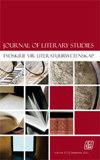The Language of the Gukurahundi Genocide in Zimbabwe: 1980-1987
IF 0.1
4区 文学
0 LITERARY THEORY & CRITICISM
引用次数: 2
Abstract
Summary The Gukurahundi genocide in Zimbabwe claimed more than 20 000 lives in the Matebeleland and Midlands provinces of the country at the hands of the state and its militia for political and tribal reasons. This article seeks to demonstrate how language, through hate speech, naming, symbolisation, dehumanisation, and classification, justified and rationalised Gukurahundi. While the linguistic conventions used by state actors before and during Gukurahundi did not cause genocide, it created two social climates, one that legitimised tribal and political hatred, thus eliminating any social sanctions preventing genocide and the other that unmasked the state-sponsored genocide clothed as a necessary military exercise against dissidents. This article employs Allport's (1954) Scale of Prejudice and Stanton's (2016) eight stages of genocide as a tool of making sense of the social processes that create society's progression from prejudice and discrimination to genocide; how through language conventions, the unthinkable becomes acceptable through the erosion of moral, social, religious and rational boundaries. Linguistic conventions show how power is enacted through discourse, how language acts prepare and maintain the way for physical and material acts, and how the same language conventions generate permissions for Gukurahundi, the Rwanda genocide and the Holocaust, amongst others. To demonstrate the permissibility conditions for non-linguistic behaviours like Gukurahundi, this article addresses the metaphor of Gukurahundi, the dehumanisation of the victims, political and religious constructions and the re-construction of the ‘other’.津巴布韦Gukurahundi种族灭绝的语言:1980-1987
津巴布韦的Gukurahundi种族灭绝在该国的Matebeleland和Midlands省夺走了2万多人的生命,这是国家及其民兵出于政治和部落原因造成的。本文试图展示语言如何通过仇恨言论、命名、符号化、非人性化和分类来证明和合理化Gukurahundi。虽然国家行为者在Gukurahundi之前和期间使用的语言惯例并没有造成种族灭绝,但它创造了两种社会氛围,一种是使部落和政治仇恨合法化,从而消除了任何防止种族灭绝的社会制裁,另一种是揭露了国家支持的种族灭绝,这种种族灭绝伪装成针对持不同政见者的必要军事演习。本文采用奥尔波特(1954)的偏见量表和斯坦顿(2016)的种族灭绝的八个阶段,作为理解从偏见和歧视到种族灭绝的社会进程的工具;如何通过语言惯例,通过道德、社会、宗教和理性界限的侵蚀,不可思议的事情变得可以接受。语言惯例展示了权力是如何通过话语产生的,语言行为如何为物理和物质行为准备和维持道路,以及同样的语言惯例如何为Gukurahundi、卢旺达种族灭绝和大屠杀等行为产生许可。为了证明像Gukurahundi这样的非语言行为的允许条件,本文讨论了Gukurahundi的隐喻,受害者的非人性化,政治和宗教建构以及“他者”的重建。
本文章由计算机程序翻译,如有差异,请以英文原文为准。
求助全文
约1分钟内获得全文
求助全文
来源期刊

Journal of Literary Studies
Multiple-
CiteScore
0.50
自引率
0.00%
发文量
0
期刊介绍:
The Journal of Literary Studies publishes and globally disseminates original and cutting-edge research informed by Literary and Cultural Theory. The Journal is an independent quarterly publication owned and published by the South African Literary Society in partnership with Unisa Press and Taylor & Francis. It is housed and produced in the division Theory of Literature at the University of South Africa and is accredited and subsidised by the South African Department of Higher Education and Training. The aim of the journal is to publish articles and full-length review essays informed by Literary Theory in the General Literary Theory subject area and mostly covering Formalism, New Criticism, Semiotics, Structuralism, Marxism, Poststructuralism, Psychoanalysis, Gender studies, New Historicism, Ecocriticism, Animal Studies, Reception Theory, Comparative Literature, Narrative Theory, Drama Theory, Poetry Theory, and Biography and Autobiography.
 求助内容:
求助内容: 应助结果提醒方式:
应助结果提醒方式:


